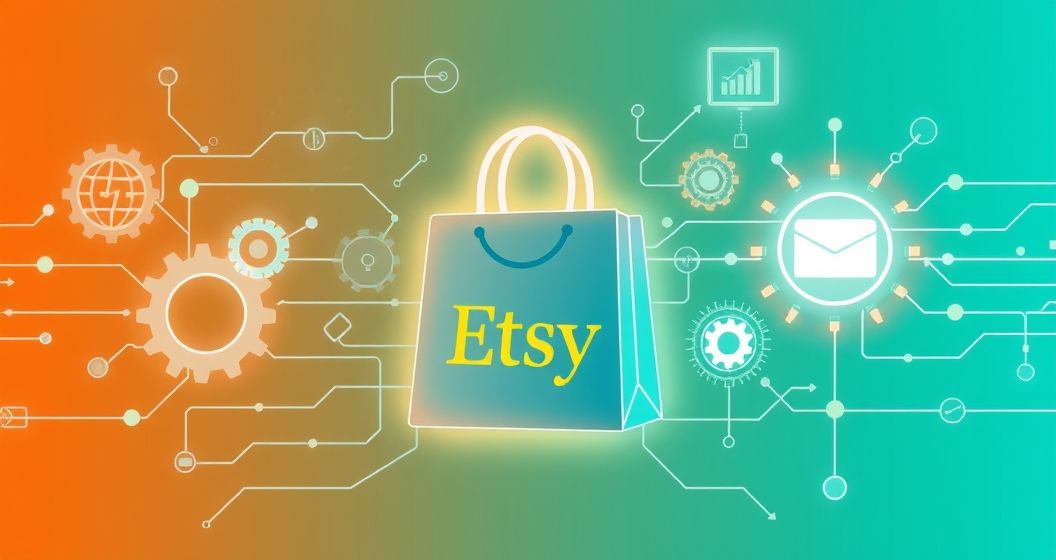Managing an Etsy shop can be a rewarding endeavor, yet it often involves a significant amount of manual work, from listing creation to order fulfillment and financial tracking. As a business grows, these tasks can become overwhelming, consuming valuable time that could otherwise be spent on product development or customer engagement. This is where Etsy integrations become indispensable, transforming a potentially chaotic workflow into a streamlined, automated, and highly efficient operation. By connecting your Etsy shop with specialized third-party applications, sellers can automate routine processes, enhance data accuracy, and ultimately scale their business with greater ease and confidence.
Understanding Etsy Integrations: The Foundation of Efficient Selling
Etsy integrations refer to the process of linking your Etsy store with external software applications designed to perform specific business functions. These tools act as bridges, allowing data to flow seamlessly between your shop and other platforms, such as inventory management systems, shipping solutions, accounting software, and marketing tools. The primary goal of these integrations is to reduce manual input, minimize errors, and automate repetitive tasks, thereby freeing up a seller’s time and resources. For any serious Etsy entrepreneur aiming for sustainable growth, understanding and leveraging these integrations is not merely an option but a strategic necessity in today’s competitive e-commerce landscape.
Key Categories of Etsy Integrations for Enhanced Business Operations
Optimizing an Etsy shop involves more than just great products; it requires robust operational support. Various integration categories address distinct business needs, each offering unique benefits for sellers. Identifying which areas of your business require the most attention is the first step in selecting the right tools. From ensuring you never oversell a unique item to simplifying your tax preparation, these integrations cover the full spectrum of e-commerce management. Understanding these categories helps in making informed decisions about which solutions best fit your specific operational demands and growth aspirations.
Streamlining Inventory Management and Product Listings
For Etsy sellers, especially those managing a large product catalog or selling across multiple platforms, inventory management integrations are crucial. These tools automatically sync stock levels between your Etsy shop and other sales channels or your internal inventory system. This prevents overselling, reduces manual counting errors, and ensures that customers always see accurate product availability. Some advanced solutions also help with bulk listing creation and editing, saving countless hours. Implementing such an integration can significantly improve operational accuracy, potentially preventing customer dissatisfaction due to out-of-stock items, and ensures a consistent shopping experience.
Automating Shipping and Order Fulfillment Processes
Efficient shipping is a cornerstone of customer satisfaction, and shipping integrations are designed to make this process as smooth as possible. These tools connect your Etsy orders directly with shipping carriers or fulfillment services, allowing for automated label generation, batch printing, and real-time tracking updates for customers. Many also offer discounted shipping rates through partnerships with major carriers, leading to substantial cost savings, particularly for high-volume sellers. By automating these steps, sellers can drastically reduce the time spent on order processing, ensuring faster dispatch and a more professional shipping experience for buyers, which is critical for positive reviews.
Simplifying Accounting and Financial Tracking
Keeping track of sales, expenses, and taxes can be one of the most daunting aspects of running an Etsy business. Accounting integrations link your Etsy sales data directly to your preferred accounting software, automatically categorizing transactions, tracking revenue, and monitoring expenses. This eliminates the need for manual data entry, significantly reducing the likelihood of errors and simplifying tax preparation. Sellers can gain a clear, real-time overview of their financial health, making it easier to identify profitable products, manage cash flow, and make informed business decisions. Such integration can cut down bookkeeping time by a considerable margin, allowing focus on core creative activities.
Enhancing Marketing and Customer Relationship Management
Beyond transactions, building lasting customer relationships and expanding reach are vital for long-term success. Marketing integrations enable Etsy sellers to connect their shop with email marketing platforms, social media schedulers, or customer relationship management (CRM) systems. This allows for automated email campaigns, personalized marketing efforts based on purchase history, and streamlined social media promotion. Analytics integrations provide deeper insights into customer behavior and sales trends, helping sellers refine their marketing strategies and product offerings. These tools are instrumental in fostering customer loyalty and attracting new buyers by maintaining consistent and targeted communication.
Integrating Print-on-Demand and Dropshipping Workflows
For sellers offering custom-designed products or utilizing a dropshipping model, specialized integrations are essential. Print-on-demand (POD) integrations connect your Etsy shop with POD providers, automatically sending order details for production and direct shipping to the customer. Similarly, dropshipping integrations automate the order fulfillment process with your chosen supplier. These integrations virtually eliminate the need for sellers to manage physical inventory or handle shipping directly, significantly reducing startup costs and operational complexities. They allow for a vast expansion of product offerings without the associated risks of holding stock, making it an attractive option for many creative entrepreneurs.
Strategic Considerations for Selecting Etsy Integration Tools
Choosing the right Etsy integration tools requires careful consideration of several factors. First, assess your specific business needs and identify the areas that consume the most time or are prone to errors. Consider your current sales volume and future growth projections; some tools are better suited for small-scale operations, while others are designed for high-volume enterprises. Budget is another crucial element, with many integrations offered on a subscription basis, ranging from affordable monthly fees to more premium plans. Evaluate the ease of use, customer support, and compatibility with your existing systems to ensure a smooth transition and maximize the benefits of the chosen solution.
Optimizing Your Etsy Workflow with Integrated Solutions
Once you have selected and implemented your Etsy integrations, the next step is to optimize their use for maximum efficiency. Regularly monitor the performance of your integrated tools to ensure they are functioning correctly and providing accurate data. Train yourself and any team members on how to effectively use the new systems, embracing the automation they offer. Periodically review your workflow to identify any new bottlenecks or areas where additional integrations could further enhance productivity. By proactively managing and refining your integrated ecosystem, Etsy sellers can create a highly efficient, scalable business model that reduces stress and fosters growth, allowing more focus on creativity and customer satisfaction.
Conclusion: The Transformative Impact of Smart Integrations
Etsy integrations are more than just optional add-ons; they are fundamental tools for any seller aiming to professionalize and scale their online business. By automating crucial aspects of inventory, shipping, accounting, marketing, and fulfillment, these solutions liberate sellers from tedious manual tasks, allowing them to concentrate on product innovation and customer engagement. The strategic implementation of the right integrations can lead to significant time savings, reduced operational costs, enhanced accuracy, and ultimately, a more robust and profitable Etsy shop. Embracing these smart tools is a strategic investment in the future success and sustainability of your creative venture in the dynamic world of e-commerce.






